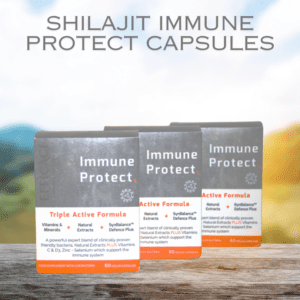Description
We have two different formulas…
Silver Diamond Drops: 30ml Blue Bottle (Original Formula)
Gold Diamond Drops: 30ml Green Bottle (Alkaline Formula)
What is the difference between the two formulas?
They are virtually the same formula, however, the Alkaline version contains slightly fewer mineral deposits, so is more suited to an acidic system.
So any human, animal, reptile, or bird, who has a high level of toxicity in their system and would like a more potent detoxification process, we would suggest the Alkaline formula. Many people like to try both types and alternate which one they want to use on different days.
We suggest the Golden Diamond Drops for Children and Animals because it has less earthy taste and the Alkaline is more suited to their biological systems.
What are the ingredients?
Every Bottle takes 2 years to cultivate and contains more than 100 nutrients, including rare electrolytes fulvic minerals, and fulvic acid!
Both the Original & Alkaline Formulas contain:
17 Organic Acids (humic & fulvic acids)
18 Amino Acids including
57 Trace Elements
10 Trace Minerals
9 Macro Minerals
5 Vitamins
Organic Acids (Humic & Fulvic Acids):
Humic Acid: A complex mixture of organic molecules that are formed through the microbial degradation of plant and animal material. It’s found in soil, peat, and coal. Humic acid has been studied for its potential to improve soil fertility and plant growth. Some research suggests it may have antioxidant and anti-inflammatory properties.
Fulvic Acid: Similar to humic acid, fulvic acid is derived from humus and is found in soil, sediment, and bodies of water. It’s known for its ability to chelate minerals, making them more readily available to cellular life in humans, animals, and plants. Fulvic acid is also being researched for its potential antioxidant and anti-inflammatory effects, as well as its ability to enhance nutrient absorption.
Trace Elements: These are chemical elements that are present in very small amounts in biological systems. They are essential for various physiological functions in both humans and animals. Some common trace elements include zinc, copper, selenium, manganese, and iodine. They are found in a variety of natural sources including soil, water, plants, and animal products. Trace elements play crucial roles in enzyme function, hormone synthesis, immune function, and overall health.
Trace Minerals: These are minerals that are required by the body in small amounts for proper physiological functioning. They include elements like iron, zinc, copper, selenium, and chromium. Trace minerals are essential for various biochemical processes such as metabolism, immune function, and cellular communication. They are found in a wide range of foods including fruits, vegetables, nuts, seeds, and grains.
Macro Minerals: These are minerals that are required by the body in larger amounts compared to trace minerals. They include calcium, magnesium, phosphorus, sodium, potassium, and chloride. Macro minerals are essential for maintaining electrolyte balance, bone health, muscle function, and nerve transmission. They are found in abundance in dairy products, leafy greens, nuts, seeds, whole grains, and seafood.
Vitamins: Vitamins are organic compounds that are essential for various physiological processes in the body. They are classified into two main groups: fat-soluble vitamins (A, D, E, and K) and water-soluble vitamins (B vitamins and vitamin C). Vitamins play key roles in energy metabolism, immune function, tissue repair, and overall health. They are found in a wide variety of foods including fruits, vegetables, dairy products, meats, and grains.
Amino Acids: Amino acids are the building blocks of proteins and play essential roles in numerous biological processes. There are 20 standard amino acids, of which 9 are considered essential because the body cannot synthesize them and they must be obtained from the diet. Amino acids are found in protein-rich foods such as meat, fish, eggs, dairy products, legumes, nuts, and seeds. They are important for muscle growth and repair, hormone synthesis, immune function, and neurotransmitter production.
Regarding the specific organic acids listed:
Fumaric Acid, Lactic Acid, Malic Acid, Succinic Acid: These are organic acids found in various fruits and vegetables. They contribute to the sour taste of certain foods and have been studied for their potential health benefits, including antioxidant and anti-inflammatory properties.
Benzoic Acid, Phenylacetic Acid, Shikimic Acid, Ferulic Acid, Caffeic Acid, Protocatechuic Acid, Gallic Acid, Cinnamic Acid: These are organic acids found in plants and foods such as fruits, vegetables, grains, and herbs. They have been researched for their antioxidant, antimicrobial, and anti-inflammatory properties, and they may offer various health benefits when consumed as part of a balanced diet.
You can gain detailed information for each ingredient below.
In nature, fulvic acid exists in two forms. The first is fulvic acid which is in the free form state remaining unbound to other molecules such as minerals, it is extremely reactive. The second is fulvic acid which is bound to minerals called fulvates often referred to as Fulvic Minerals.
Our unique and world-class Fulvic formula, contains an abundance of both these fulvic forms!
Malic Acid (200 ppm) – Is made by all living organisms and contributes to the pleasantly sour taste of fruits.
The salts and esters of malic acid are known as malates. The malate anion is an intermediate in the citric acid cycle. In the C4 carbon fixation process, malate is a source of CO2 in the Calvin cycle. In the citric acid cycle, (S)-malate is an intermediate, formed by the addition of an -OH group on the si face of fumarate. Malic acid occurs naturally in all fruits and many vegetables, and is generated in fruit metabolism.
One of the most commonly touted benefits of malic acid is its ability to help reduce pain. Although malic acid takes several days of consistent consumption for the supplement to take full effect, it can start to reduce pain as quickly as 48 hours after the first supplement.
Malic acid helps boost energy levels and is an essential component in the Krebs cycle, a process that turns carbohydrates, proteins, and fats into energy and water in the body. If there isn’t an adequate supply of malic acid in the body, the Krebs cycle can’t function properly, leading to fatigue. Malic acid is typically used to improve sports performance when taken in supplement form.
When applied to the skin, malic acid is used to remove dead skin cells, reduce signs of aging — including wrinkles — aid in the treatment of acne, and promote the production of collagen, a type of protein that serves as a major component of the skin.
Succinic Acid (200 ppm) -Succinate plays a role in the citric acid cycle, an energy-yielding process. Succinate plays a role in the citric acid cycle, an energy-yielding process. Succinic acid can be converted into fumaric acid by oxidation.
Succinic acid is used in the food and beverage industry, primarily as an acidity regulator. It is also sold as a food additive and dietary supplement, and is generally recognized as safe for those uses by the U.S. Food and Drug Administration. Succinic Acid (also called Amber Acid) has been used in Europe as a natural antibiotic and general curative for centuries. Succinic acid makes up a large part of natural Baltic amber. Succinic Acid is also a natural constituent of plant and animal tissues. A powerful anti-oxidant that helps fight toxic free radicals and disruptions of the cardiac rhythm, succinic acid has been shown to stimulate neural system recovery bolster the immune system, and help compensate for energy drain in the body and brain, boosting awareness, concentration, and reflexes, and reducing stress.
Benzoic Acid – (800 ppm) Benzoic acid occurs naturally in many plants and it serves as an intermediate in the biosynthesis of many secondary metabolites. Salts of benzoic acid are used as food preservatives…Benzoic acid inhibits the growth of mold, yeast and some bacteria. Benzoic acid is relatively nontoxic Benzoic acid occurs naturally as do its esters in many plant and animal species. Appreciable amounts have been found in most berries (around 0.05%). Ripe fruits of several Vaccinium species (e.g., cranberry,V. vitis macrocarpon;bilberry, V. myrtillus) contain as much as 0.03– 0.13% free benzoic acid. Benzoic acid is also formed in apples after infection with the fungus Nectria galligena.
Phenylacetic Acid (200 ppm) – Phenylacetic acid has been found to be an active auxin (a type of plant hormone), found predominantly in fruits. However, its effect is much weaker than the effect of the basic auxin molecule indole-3-acetic acid. In addition it is used as an antimicrobial. It is also the oxidation product of phenethylamine when acted on by the enzyme monoamine oxidase found in humans and many other organisms. It is also employed to treat type II hyperammonemia to help reduce the amounts of ammonia in a patient’s bloodstream by forming phenylacetyl-CoA, which then reacts with nitrogen-rich glutamine to form phenylacetylglutamine. This compound is then secreted by the patient’s body.
Shikimic Acid (1600 ppm) – Is an important biochemical metabolite in plants and microorganisms. The shikimate pathway is a seven step metabolic route used by bacteria, fungi, algae, parasites, and plants for the biosynthesis of certain amino acids. South Korean researchers found that extracts and essential oils of star anise exhibited strong antifungal properties when tested against Candida albicans. In the Dec. 10, 2010, issue of “Korean Journal of Medical Mycology,” they said their findings confirm that extracts from Illicium verum are promising candidates for use as antifungal agents. Star anise contains high quantities of Shikimic Acid.
Ferulic Acid (900 ppm) – As a component of lignin, ferulic acid is a precursor in the manufacture of other aromatic compounds. The etymology is from the genus Ferula, referring to the giant fennel (Ferula communis). Ferulic acid is one of the components of asafoetida, the dried latex from the giant fennel (Ferula communis). It is one of the phenolic compounds found in the invasive plant species carpobrotus edulis and contributes to the antibacterial and antioxidant properties of the plant. It is an antioxidant in vitro in the sense that it is reactive toward free radicals such as reactive oxygen species (ROS). ROS and free radicals are implicated in DNA damage, cancer, and accelerated cell aging. Animal studies and in vitro studies suggest that ferulic acid may have direct antitumor activity against breast cancer and liver cancer. Ferulic acid may have pro-apoptotic effects in cancer cells, thereby leading to their destruction. If added to a topical preparation of ascorbic acid and vitamin E, ferulic acid may reduce oxidative stress and formation of thymine dimers in skin. There is also a small amount of research showing oral supplements of ferulic acid can inhibit melanin production in the process of skin whitening.
Caffeic Acid (2700 ppm) – Is found in all plants because it is a key intermediate in the biosynthesis of lignin, one of the principal components of plant biomass and its residues. Caffeic acid is found at a very modest level in coffee, at 0.03 mg per 100 ml. It is one of the main natural phenols in argan oil. It is found at high level in some herbs, especially thyme, sage and spearmint (at about 20 mg per 100 grams), at high levels in spices, especially Ceylon cinnamon and star anise (at about 22 mg per 100 grams), found at fairly high level in sunflower seeds (8 mg per 100 grams), and at modest levels in red wine (1.88 mg per 100 ml) and in applesauce, apricot and plum prunes (at about 1 mg per 100 grams). It is at super high level in black chokecherry (141 mg per 100 grams) and in fairly high level in ligon berry (6 mg per 100 grams).[6]It is also found in barley grain and in rye grain.
Caffeic acid has a variety of potential pharmacological effects in in vitro studies and in animal models, and inhibitory effect of caffeic acid on cancer cell proliferation by oxidative mechanism in human HT-1080 fibro sarcoma cell line has recently been established.
Caffeic acid is an antioxidant in vitro and also in vivo. Caffeic acid also shows immunomodulatory and anti- inflammatory activity. Caffeic acid outperformed the other antioxidants, reducing aflatoxin production by more than 95 percent. The studies are the first to show that oxidative stress that would otherwise trigger or enhance Aspergillus flavus aflatoxin production can be stymied by caffeic acid. This opens the door to using natural fungicide methods by supplementing trees with antioxidants.
Protocatechuic Acid (300 ppm) – a type of phenolic acid. It is a major metabolite of antioxidant polyphenols found in green tea. Protocatechuic acid (PCA) is antioxidant and anti-inflammatory. PCA extracted from Hibiscus sabdariffa protected against chemically induced liver toxicity in vivo. In vitro testing documented antioxidant and anti- inflammatory activity of PCA, while liver protection in vivo was measured by chemical markers and histological assessment. Açaí oil, obtained from the fruit of the açaí palm (Euterpe oleracea), is rich in protocatechuic acid (630 ± 36 mg/kg)., Protocatechuic acid also exists in the skins of some strains of onion as an antifungal mechanism, increasing endogenous resistance against smudge fungus. It is also found in Allium cepa (17,540 ppm).
Gallic Acid (7500 ppm) – is a type of phenolic acid. Gallic acid is an organic acid found in foods such as blueberries, apples, flaxseeds, tea leaves, oak bark, walnuts and watercress Gallic acid is found in several land plants, such as the parasitic plant, Cynomorium coccineum, the aquatic plant, Myriophyllum spicatum, and the blue-green alga, Microcystis aeruginosa.
Cinnamic Acid (1400 ppm) (all isomers) – occurs naturally in a number of plants. It is obtained from oil of cinnamon, or from balsams such as storax.[4]It is also found in shea butter. Cinnamic acid has a honey-like odor. Cinnamic acid is also part of the biosynthetic shikimate and phenylpropanoid pathways
Shipping Information
Delivery: please allow 2-7 days for UK orders and up to 30 days for worldwide shipping.
Custom laws: Contact for advice, especially for countries with strict regulations. Import charges may apply in some countries.




Reviews
There are no reviews yet.